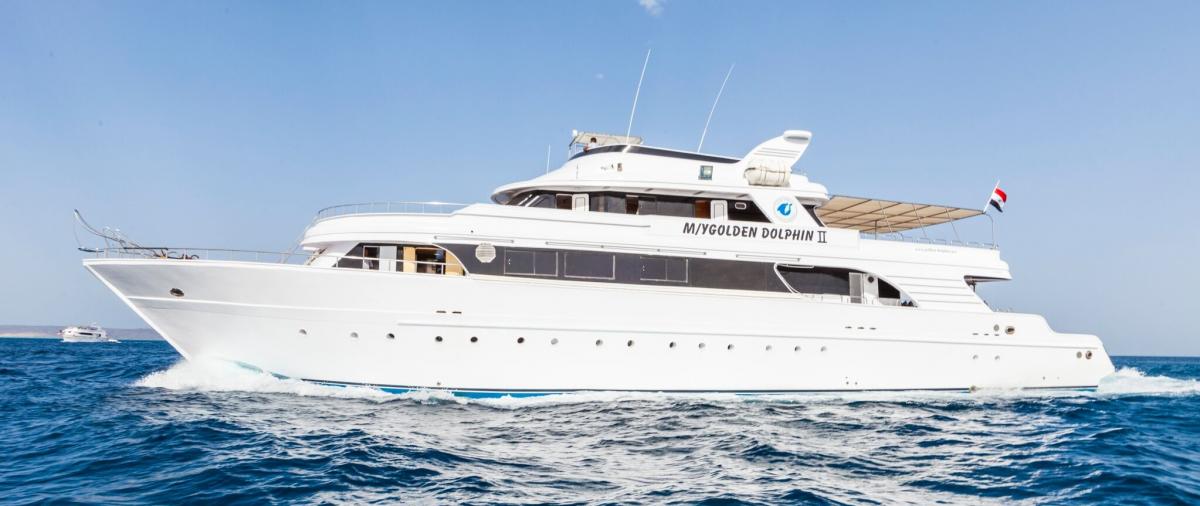
Golden Dolphin II Liveaboard, Egypt
Since 2006, the Golden Dolphin II liveaboard has been running year-round dive cruises to explore the Egypt liveaboard experience. This 36-meter-long yacht is purpose-built for divers and hosts up to 20 guests in 10 spacious cabins that boast en-suite bathrooms and air conditioning. On the lower deck, there are eight twin cabins, while on the upper deck, you will find two double cabins with king-size beds. All cabins have a mini-bar so guests can rest comfortably between dives.
Social spaces on board offer a lot of choices to relax. You will find two huge sundecks with both shaded and open lounging areas, featuring comfortable sunbeds. The outdoor lounge is yet another place where you can feel your senses relaxed, offering a view of the Red Sea. Inside the vessel, you will find a spacious salon, a dining room, and a bar created with an atmosphere of coziness and friendliness. Meals are served in the big dining room, and local and international cuisine is elaborated from fresh ingredients.
The diving facilities on this Egypt liveaboard are well designed to answer the divers' needs: a large dive deck at the back of the yacht offers individual storage for diving equipment, and camera setup tables for underwater photographers. Certified divers have Nitrox free of charge, and there are two zodiacs to make drop-offs and pick-ups at dive sites efficiently. The routes will cover some of the most demanded diving destinations in the Red Sea: Brother Islands, Daedalus, Elphinstone, and St. Johns. There is the possibility for divers to explore healthy coral reefs, view large pelagic species such as sharks, and generally view the mass amount of marine life for which the Red Sea is known.
The attentive and very experienced crew, too, ensures a hassle-free diving holiday-from equipment to expert guidance on dive sites. Guests on board can make up to three dives daily to maybe experience the varied underwater landscapes that make the Red Sea among the world's best diving destinations
Cabins
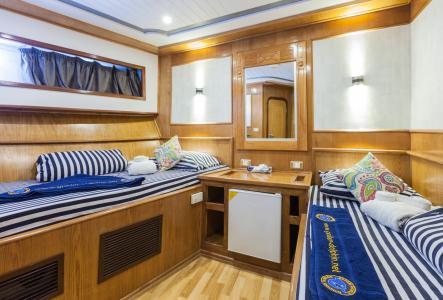
Twin Cabin
Twin Cabin
Twin Cabin
Deck:Lower Deck
Bedding:Twin Beds
Max occupancy:2 Guests
Number of Cabins:8 Cabins
Ensuite Bathroom: Yes
Aircon: Yes
- Towels
- Toiletries
All cabins with AC, minibar private bathroom

Double Cabin
Double Cabin
Double Cabin
Deck:Upper Deck
Bedding:Double Bed
Max occupancy:2 Guests
Number of Cabins:2 Cabins
Ensuite Bathroom: Yes
Aircon: Yes
- Towels
- Toiletries
All cabins with AC, minibar private bathroom
Boat Specification
1-2 dive guides on board
Up to 10 crew members speak Arabic, English
Dive Facilities
- Compressors
- Tenders for Diving
- Dive Deck
Boat navigation & safety
Full safety
Food & Drinks
- Western Food
- Local Food
- Dietary Restrictions
- Buffet Style
- Alcoholic Beverages and Spirits
- Hot & Cold Soft Drinks
- Snacks All Day
Onboard Facilities
- Audio & Video Entertainment
- Air Conditioned Saloon
- Sun Deck
- Sun Loungers
- Indoor Saloon
- Bar
Photographer Facilities
- Separate Rinsing Tanks for U/W Camera
Frequently Asked Questions About Golden Dolphin II
What should I pack for a liveaboard?
Is it advisable to use environmentally friendly toiletries?
What to wear in the Red Sea climate?
What are the best months for diving in the Red Sea?
What marine life can be seen during different seasons?
Itinerary Highlights
The SS Thistlegorm is considered the Red Sea's most famous wreck. Lying upright at 32 meters, this British cargo ship sank in 1941, carrying military equipment like tanks, trucks, motorcycles, and railway engines. Abu Nuhas reef hosts four wrecks, including the Greek cargo ship Giannis D, which sank in 1984, now covered with corals. The Dunraven was a spice and timber transporter that broke in two after running aground in 1876; it rests on the sea floor in two sections.
Shark Reef and Yolanda Reef are part of the Ras Mohamed marine park, situated on a plateau which falls from 10 to 20 meters down to over 200 meters. These reefs are known for their numerous different corals and fish life. Yolanda Reef has the cargo of the Cypriot freighter that was wrecked there, including toilets and bath tubs, making this dive site slightly different
Similar Liveaboards
 EgyptSeawolf Dominatorfrom
EgyptSeawolf Dominatorfrom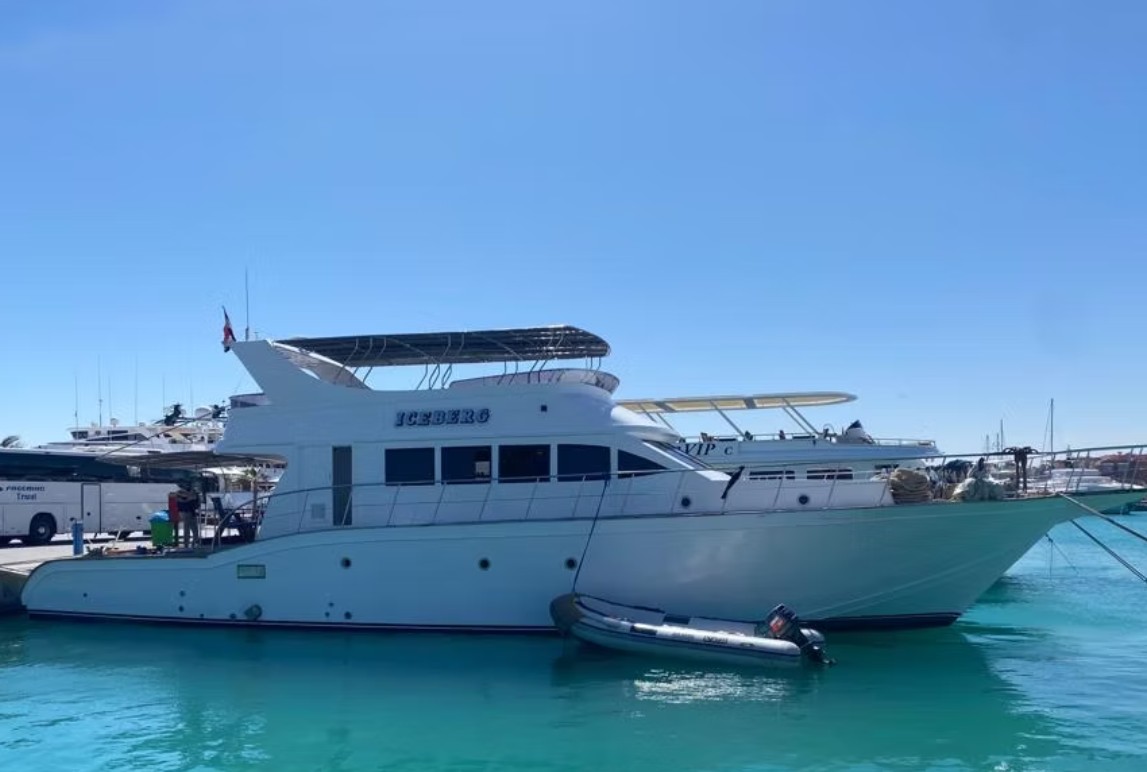 EgyptIcebergfrom
EgyptIcebergfrom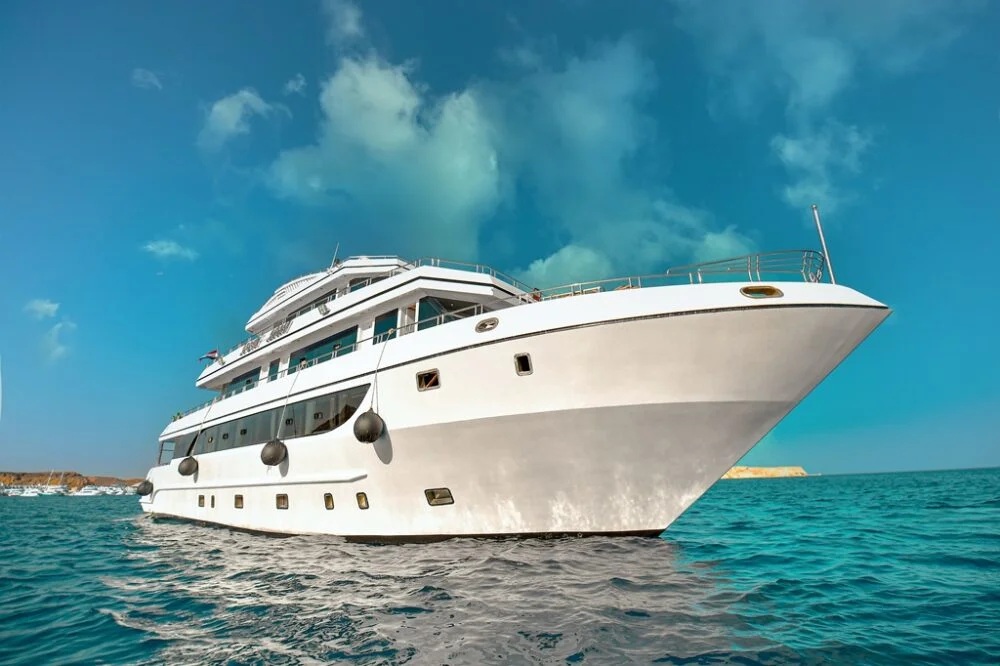 EgyptSouth Moon 1from
EgyptSouth Moon 1from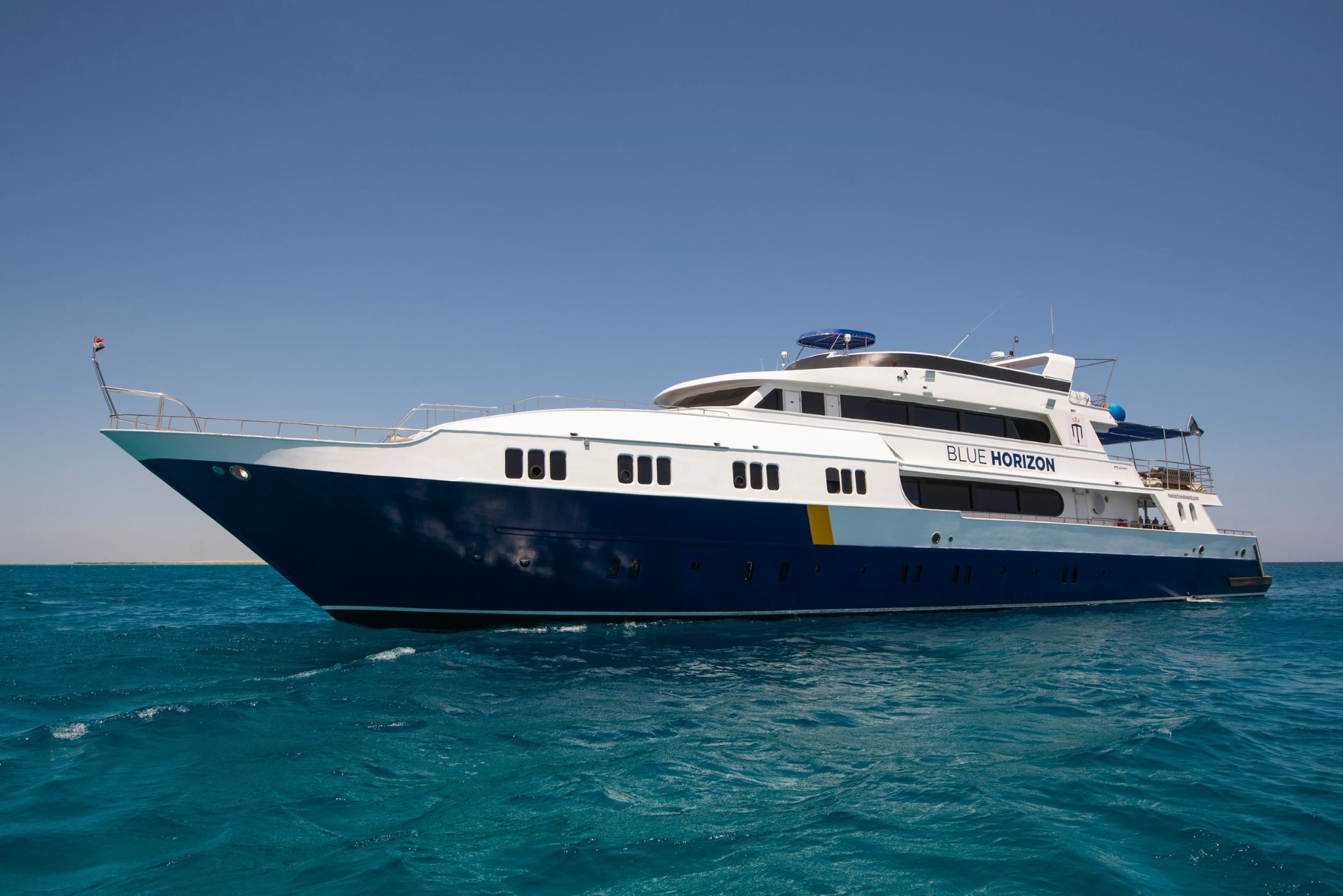 EgyptBlue Horizonfrom
EgyptBlue Horizonfrom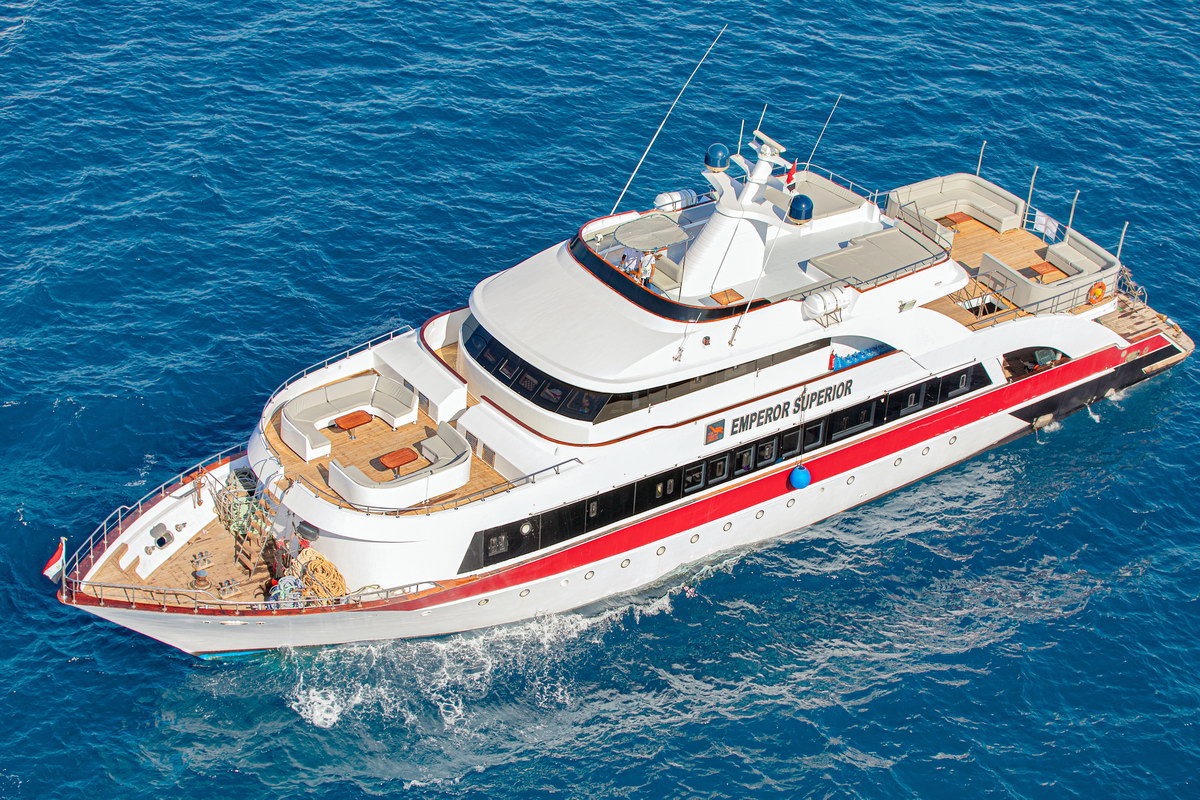 EgyptEmperor Superiorfrom
EgyptEmperor Superiorfrom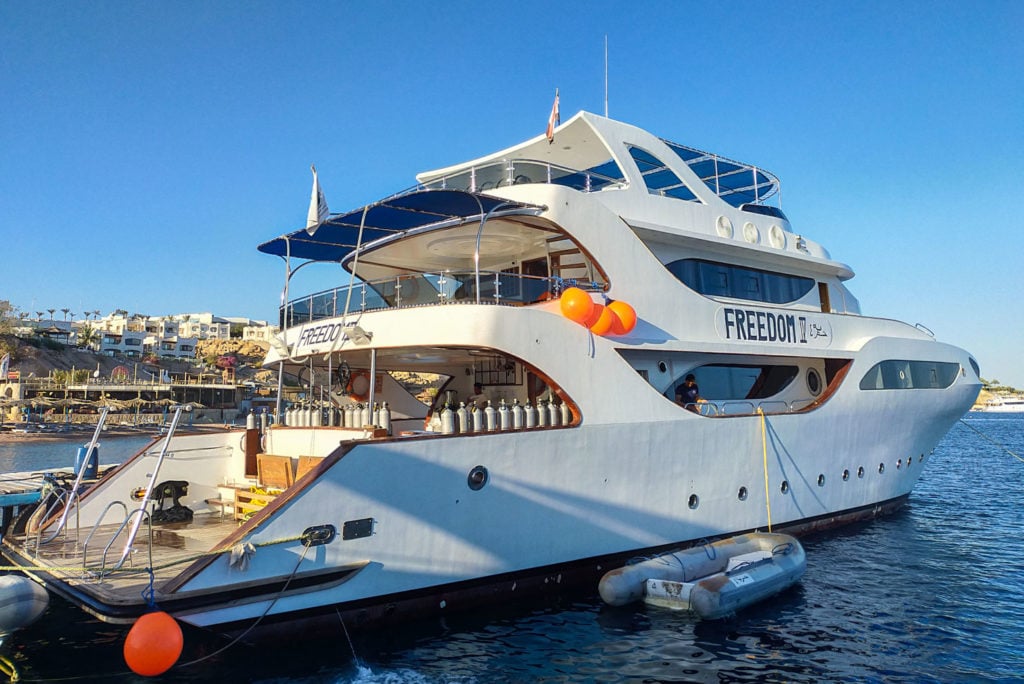 EgyptFreedom IIIfrom
EgyptFreedom IIIfrom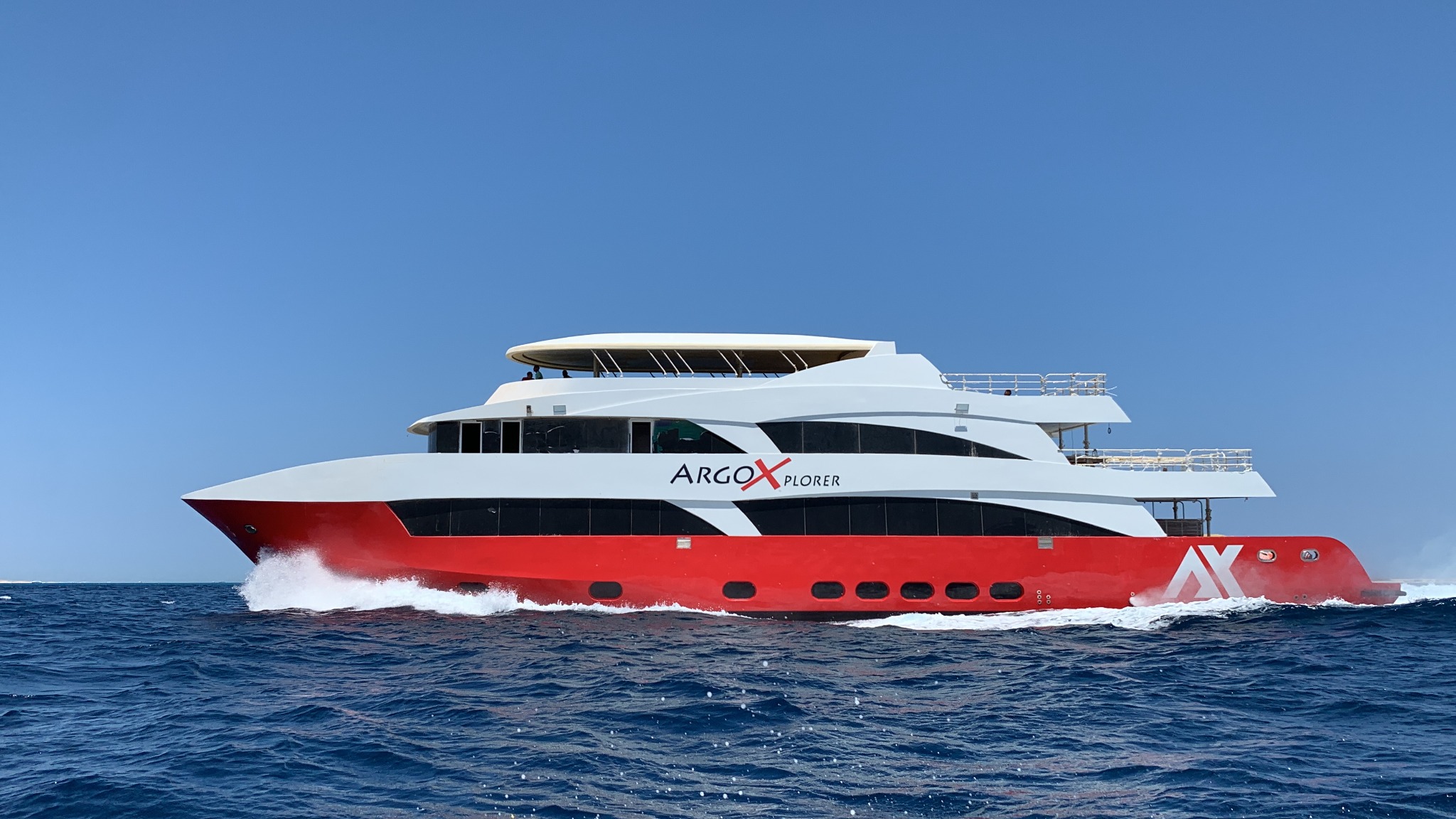 EgyptArgo (Egypt)from
EgyptArgo (Egypt)from EgyptAphroditefrom
EgyptAphroditefrom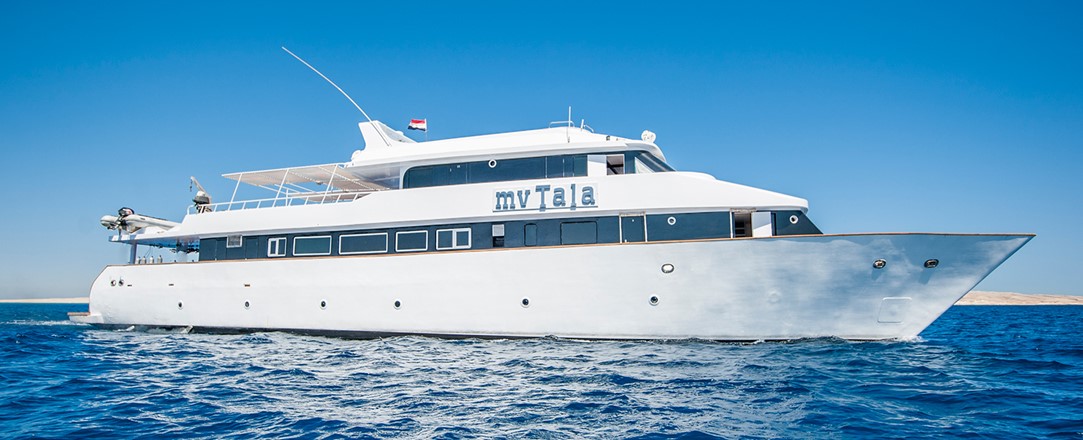 EgyptTalafrom
EgyptTalafrom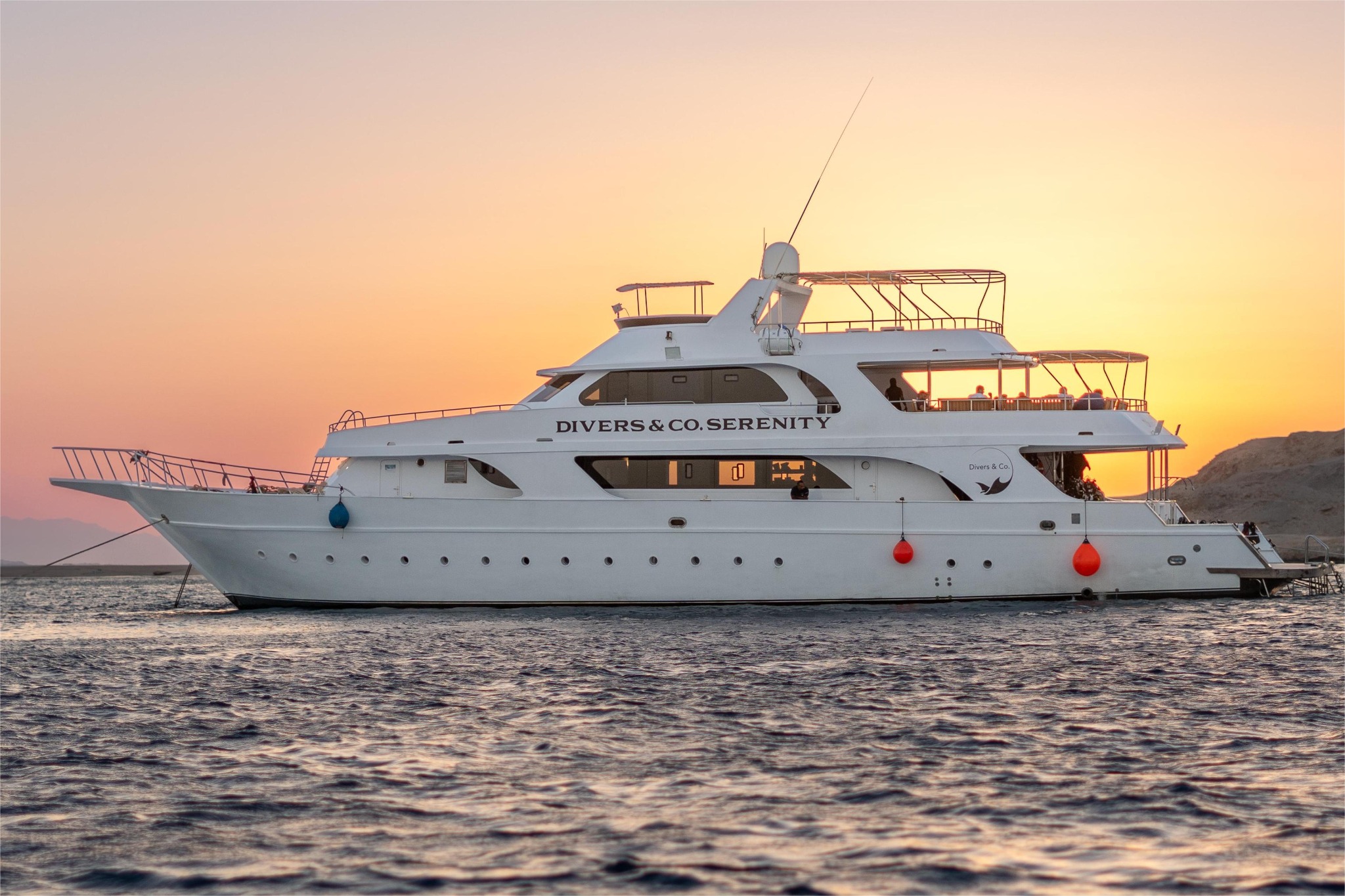 EgyptSerenityfrom
EgyptSerenityfrom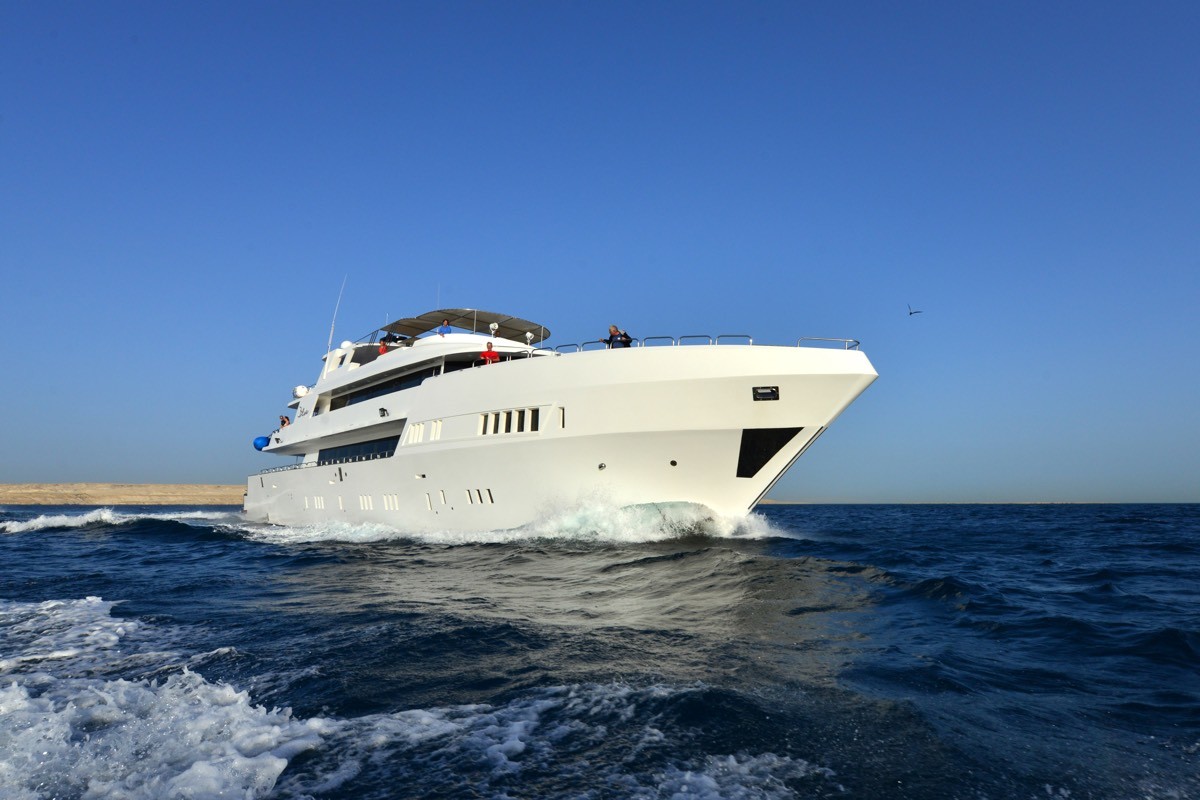 EgyptBluefrom
EgyptBluefrom EgyptGalaxy 720from
EgyptGalaxy 720from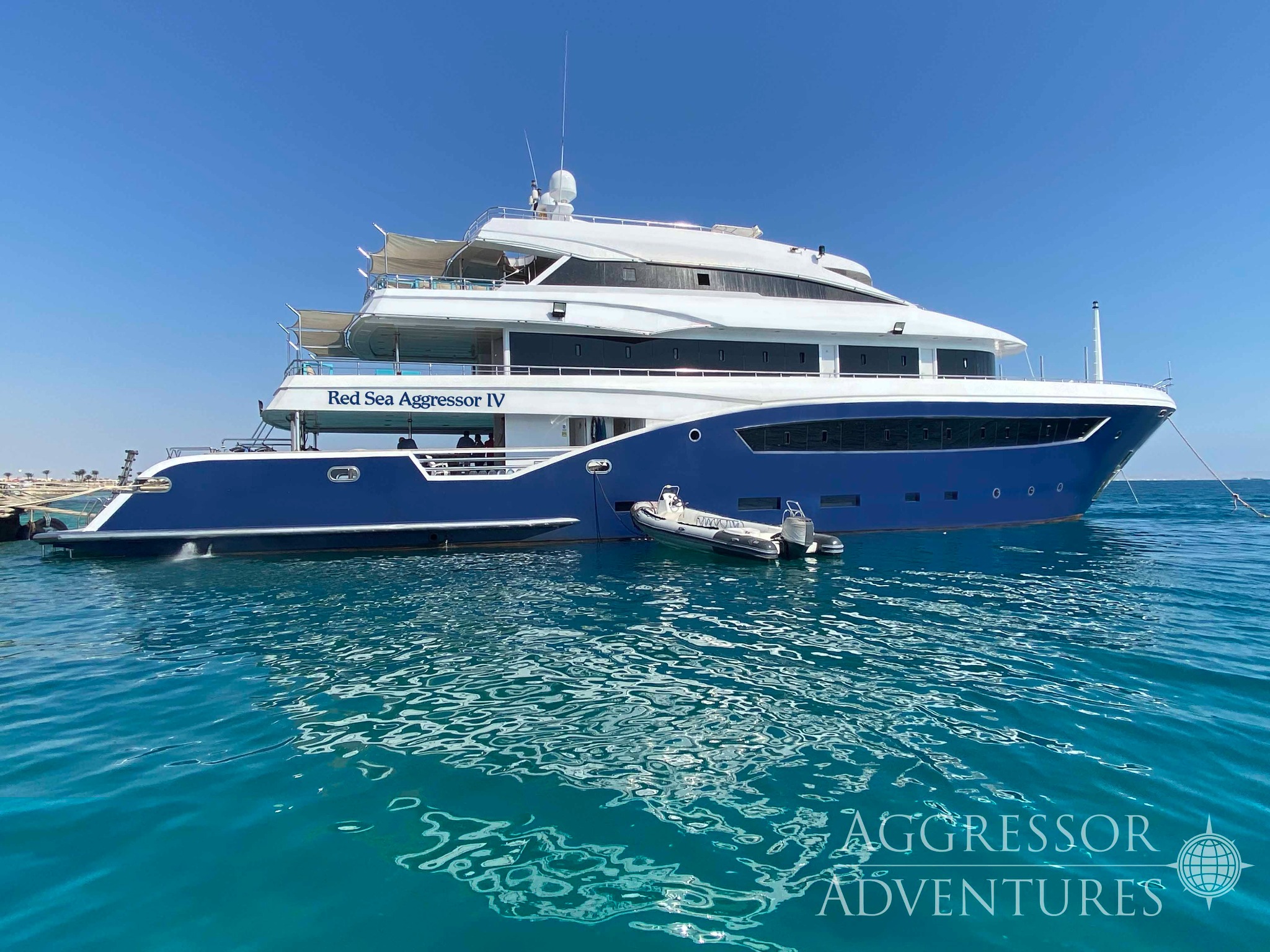 EgyptRed Sea Aggressor IVfrom
EgyptRed Sea Aggressor IVfrom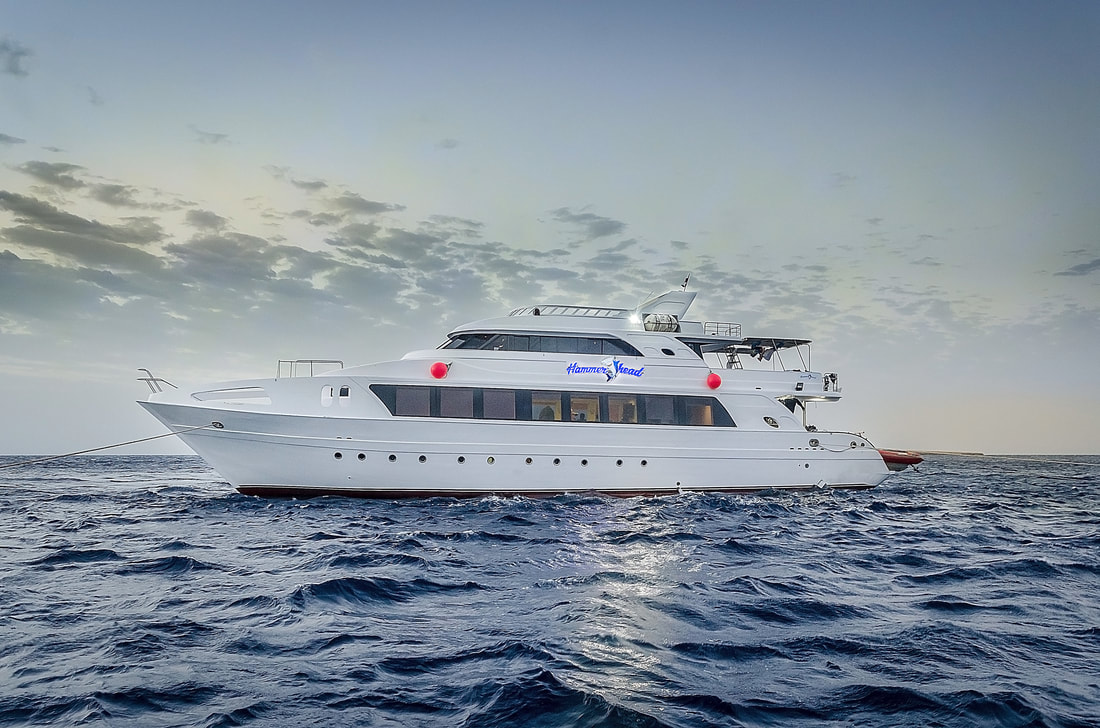 EgyptHammerhead I
EgyptHammerhead I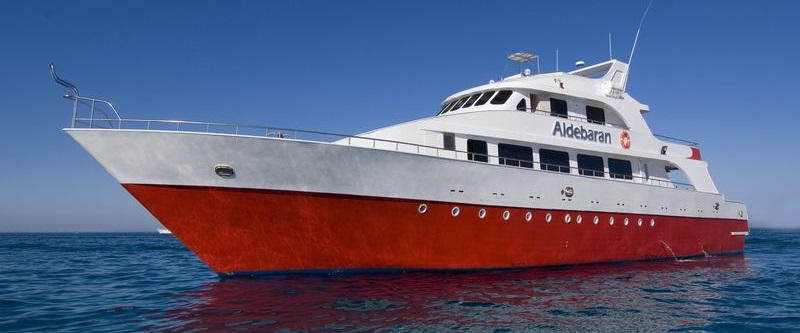 EgyptAldebaranfrom
EgyptAldebaranfrom EgyptHeaven Saphirfrom
EgyptHeaven Saphirfrom EgyptNeo
EgyptNeo EgyptBlue Melodyfrom
EgyptBlue Melodyfrom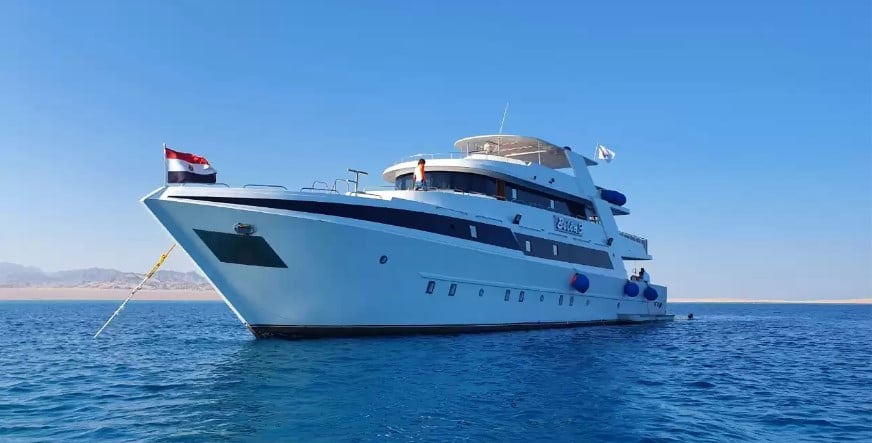 EgyptBella 3from
EgyptBella 3from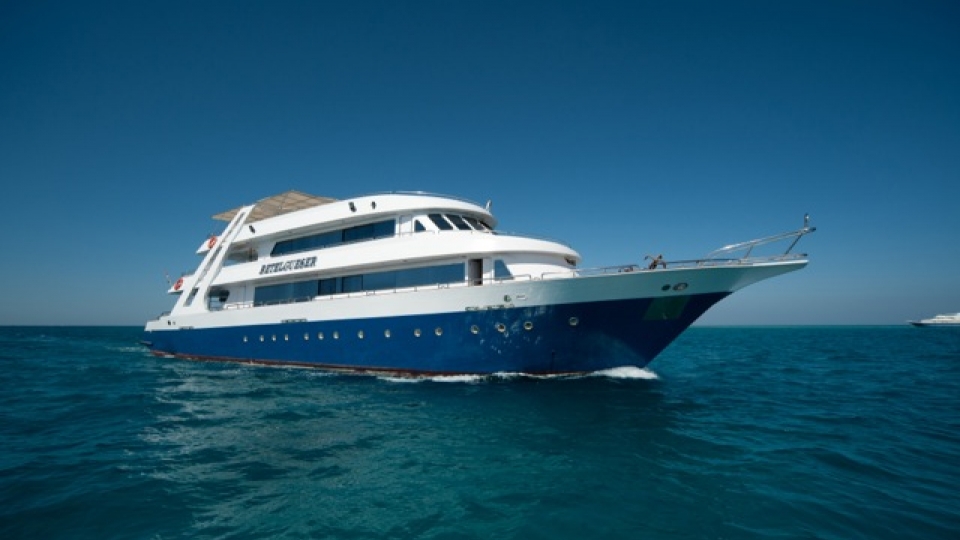 EgyptBetelgueser
EgyptBetelgueser